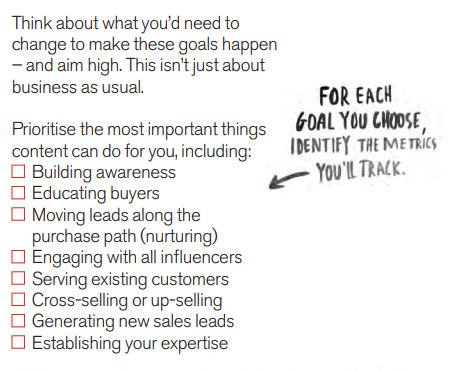The Ultimate Content Writing Training Program for Freelance Writers Looking to Craft Amazing Content That Gets More Views, Likes, Shares, Traffic, Leads, and Sales (2020 Mentoring)
Step #1
Read the client’s BRIEF (and ask follow-up questions to ensure you get it right!)
You cannot write content that shakes the marketplace and significantly impacts the targeted audience unless you fully grasp the client’s brief and understand their requirements for each piece you write.
Your #1 goal as a freelance writer is to get this right and ask follow-up questions if you are unsure or get stuck on how to write, how to research, – based on the needs of the client.
Sadly, most clients with whom I’ve worked provided unclear briefs or no brief at all.
So, it is your responsibility to ask your client(s) these 9 core questions to help him/her craft the right brief, allowing you to come up with the best content on the topic.
Customize this for each specific case scenario and client.
#1 – What’s your #1 goal with the content I’m going to create for you (beyond getting the click, lead, booking, or sale)?
(e.g., to be seen and perceived as an expert/authority in the field; to build trust, to educate, to teach, etc.)
#2 – Who is your ideal target audience (dream prospect, client, or customer)?
(please describe their biggest pain points, challenges, wants, needs, and concerns, in as much detail as possible)
To achieve this, you need to create your buyer persona. Yes, it’s a process that takes time and patience, and that’s why the content of most business owners and writers misses the mark completely.
A buyer persona refers to a detailed description of your target customer. It’s a document that lists everything from demographic information to hobbies, from career history to family size — all written as if the persona were a real person.
Example
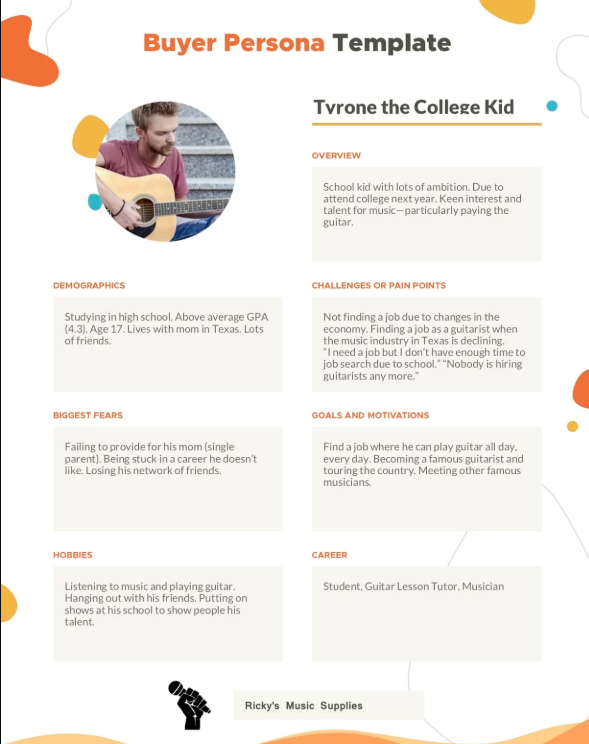
Click here for Make My Persona Tool. (use this tool)
Further reading on the topic:
The Ultimate Guide to Developing Buyer Personas (with Templates!)
Top 5 Customer Persona Generators
Amazing buyer persona resources & tools (by Hubspot)
Here Are 10 Buyer Persona Examples to Help You Create Your Own
How to Build a Buyer Persona (Includes Free Template) – by Hootsuite
#3 – What is that one thing you want to promote or (pre)sell with your content (overall and/or at the end)?
(it may be an idea, concept, story, analogy, principle, product, service, training, course, etc.)
#4 – What is the core idea behind this? Why you/your brand, and why is now the time to talk about it or present it to the marketplace?
#5 – What is the suggested title(s), keyword(s), and introductory paragraph/core idea you want me to expand my research on to create your desired content for each piece you want written?
#6 – What do you want your audience to THINK – FEEL – and DO while reading the content, as well as right after they’re done?
(ideally, you should have one core call-to-action, distributed over multiple hyperlinks, each with different text, buttons, and graphics)
#7 – What is the writing style and voice you want to convey in this piece/your content?
Voice consists of three key elements: tone, cadence, and vocabulary. Which is yours? For further information on voice types, check out this PDF and graphics.
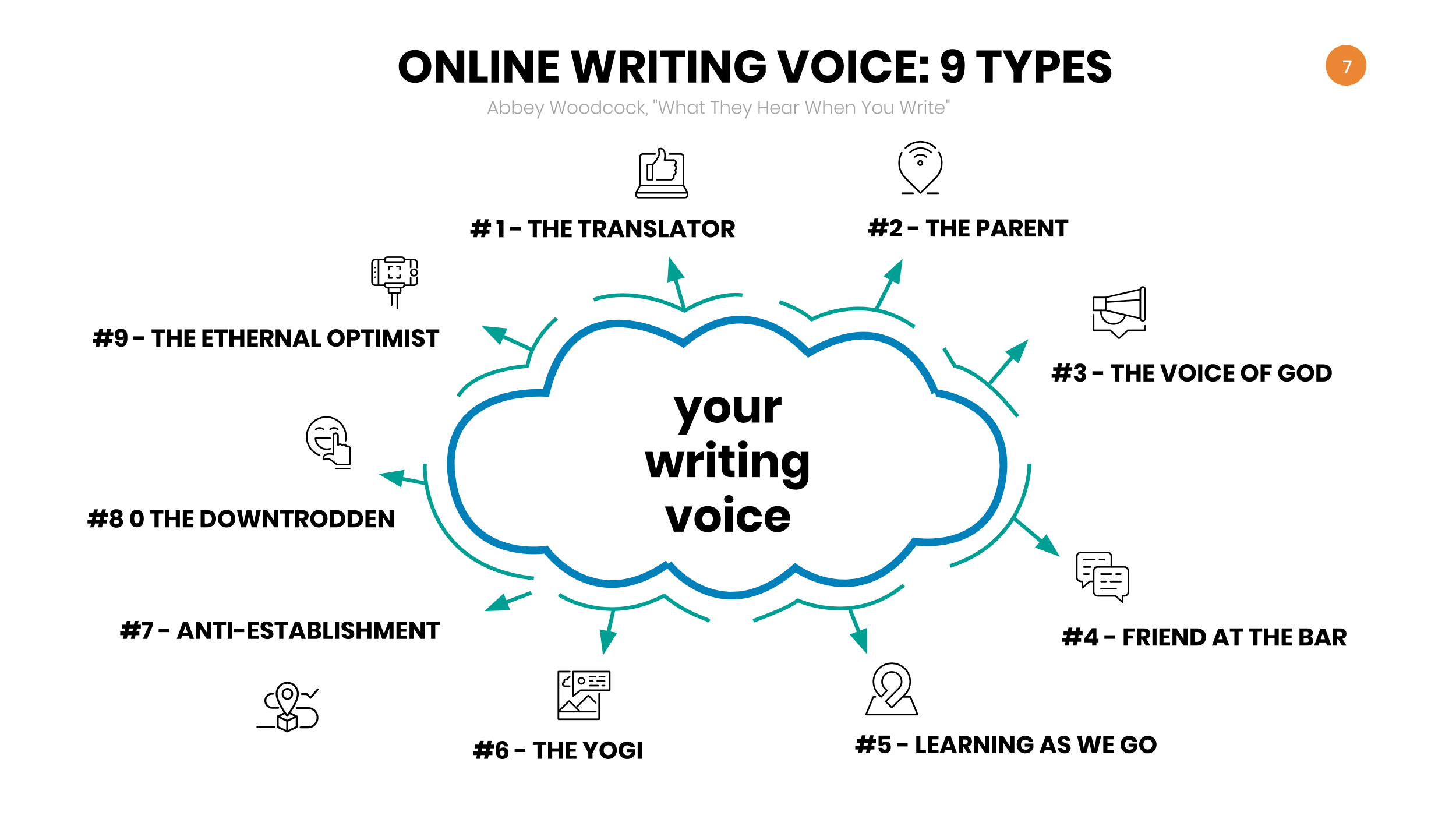
# 8 – Who are your competitors (blogs, websites and content)?
(Your content is always in competition with other content – not just from your direct, commercial competitors, but also from anyone publishing content on the same topic. If you want to get ahead… understand its strengths and weaknesses.)
# 9 – What else do I need to know before we conduct further research and start the writing process?
Next, take the intensive research route based on the information (client brief) provided above. You need to collect valid AND up-to-date information, legit/authority reference links, and relevant statistics. This will support your claims and help you create high-impact content.
This is why I Take (At Least!) 3 Hours Before I Write A Short E-mail or Blog Post. (key read)
Jump back (at the top of section).
Step #2
Perform In-depth Research Like a Pro (it’s your one chance to impress and over-deliver to the client, the reader, and anybody else)
Before you write anything, do extensive, competitive research on similar websites and blogs containing the best content.
Make use of ALL of these websites, as well as other niche related industry outlets, such as:
Google ; Google Scholar ; YouTube ; Quora ; LinkedIn ; Twitter ; Facebook ; Ahrefs ; Ubersuggest ; BuzzSumo.
Your goal is to find, collect, and analyze the best content on the topic(s) you’re going to write about, while improving it, making it more detailed and/or easier to digest and implement.
Learn how to enhance your content by using the Skyscraper technique. Your objective would be to beat the existing content on every level: length, design, current information etc.
*** Create your BEST CONTENT IDEAS swipe file
This means you’ll be collecting relevant articles and content on the topics you write about, or that you’re highly interested in, for later use and referencing.
I have a folder in Google drive called “IDEAS” – there I have two different documents (one for articles and content that I find useful and save for later use in my own native language, Romanian, as well as a different document in English with relevant content)

Here’s how mine looks like at the moment. Notice how I save the title and hyperlink to each resource.
Whenever I need/want to write on a particular topic or find valuable reference links, I just press the CTRL + F keys on my keyboard and type in a keyword. Instantly, I’m able to find all links related to that particular keyword (topic or subject)
You may want to categorize your content by specific topics and keywords. This is a work in progress folder and a lifetime practice.
Once the research phase is done, move on to the next step.
Jump back (at the top of section).
Step #3
How to Write Highly-Engaging Introductions
Headlines get you clicks, but introduction paragraphs make readers stay (or leave immediately). That’s why writing a compelling introduction is imperative to the success of your content.
Depending on your target audience and/or client requirements, you can use any of these 3 methods to create amazing intros, where and how you see fit.
#1: Start With A Relevant and Compelling Question to Evoke Curiosity
*** You should have a better idea of how to enhance the introduction after you’ve completed the final piece of writing. I usually recommend that you revisit the introduction and rewrite/revamp it to make improvements, before sending the document as a final draft to the client.

Follow these guidelines for writing compelling questions:
1. Focus on the main/biggest pain or challenges associated with the topic and title.
The reader has to feel like you are aware of their pains and challenges. Therefore, you should make use of “you” often, beyond the introduction.
2. Intensify the feelings and emotions associated with these challenges. You may want to talk about the subsequent symptoms and effects of the cause/main issue. Use the PAS formula. Problem-agitate-solution.
Copywriters often talk about the cost of not taking action, meaning that expressing the snowball effect of a cause, will help the reader better understand their situation and take action (in our case, read the next paragraph, and hopefully, the entire article/until the end)
3. Incorporate the suggestions above into the first three or four paragraphs, before you dive into the meat of the content.
Use one of these 6 fill-in-the-blank templates; they compel and engage readers in…
Is it hard / challenging / time-consuming to do X __ ?
Trying / Struggling to do X?
Is X holding you back from Y?
Are you | Do you feel ___ ?
[anxious about X / sick & tired of / stressed about X / stuck trying to X / overwhelmed by / confused about / frustrated trying to / worried about] ?
Have you given up on doing/getting X / ___?
Click here to download the swipe file!
#2: Start With Legit Facts (Numbers Get the Attention)
People love discovering new data, but only if it is unique, startling, or even shocking. The statistics should also be directly relevant to the point you are trying to convey with your content.
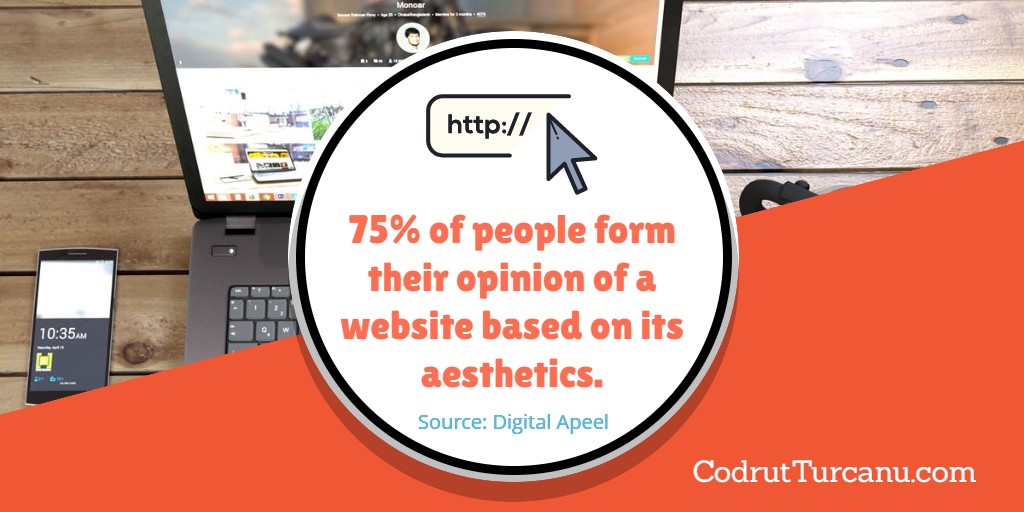
- Numbers add credible details to your message.
If you want your content to be more believable, add specific details.
When you’re talking about earning or saving money or time, calculate the figures for a year to give you more impressive metrics.
e.g. Join today to save 20% on your monthly bill. That’s $27.95 every month, giving you an extra $335.40 in your pocket after just one year.
Or…
The new freeway express lane will save you 10 minutes on your drive to work. You’ll have more than 6 extra hours a month just from your daily commute, or more than 3.5 days a year!
- Make numbers even more compelling!
Calculations and huge numbers are difficult to grasp and remember.
Providing a comparison helps readers turn the values into concrete objects, much like in the context of a smaller group.
You can compare the spending (or saving) to something your reader will be familiar with, while framing it against the transformation you’re offering.
e.g.
For the price of a takeaway coffee per week, you could be …
And this doesn’t just work for money. You can make time saved more meaningful by giving it context.
Example:
The new freeway express lane will save you 10 minutes on your drive to work. You’ll have more than 6 extra hours a month just from your daily commute, or more than 3.5 days a year. That’s a long weekend mini-break you didn’t have before!
My favourite copywriter, legend Eugene Schwartz once said…
No sentence can be effective if it contains facts alone. It must also contain emotion, image, logic, and promise.
Bonus tip: convert text into eye-catching content.
Add charts and graphs when relevant. Screenshots, Images, GIFs, and Infographic Clippings. Visual data helps readers to process it quickly and looks amazing. This goes beyond introductions.
Worth further reading:
The Beginner’s Guide to Writing a Data-Driven Post
#3: Use a Compelling and Relevant Analogy Or a Metaphor
Analogies, metaphors, and similes are some of the most powerful tools available when it comes to telling a story in a single sentence.
This is a great way to capture a reader’s attention and also serves to provoke mental imagery that allows readers to tell a story to themselves.
Example

- Invoke the mind’s eye.
Producing a mental image in a reader’s mind is one of the most powerful things you can ever do as a writer. Therefore, expressly engaging the imagination is a powerful opening technique.
Activate the imagination of the reader by using words like “imagine,” “picture this,” “do you remember when,” etc.
Make use of these Sensory Words/Strong Verbs because they add punch to your content.
Jump back (at the top of section).
Step #4
How to Craft Amazing “Middle” (aka, ‘Core Essence’) Content
Once your introductory paragraph is done, you need to dive right into the core essence of the content.
Write Drunk, Edit Sober.
Just write.
Forget about spelling mistakes, typos, sentence structures, attributions, images, links, SEO and everything else in this world.
Just write.
In general, you need to venture beyond blatant affirmations and provide strong arguments when writing.
After you write a sentence or paragraph, lead the reader to the next one by striving to answer the million-dollar question:
“so what”, “why”, or “what’s in it for me”?
How to venture beyond plain affirmations?
- Use the “Show, don’t tell” formula. This is a vital content writing principle we constantly use in copywriting. So, make use of statistics, quotations, and analogies within your content, and ALWAYS link to legit/credible sources/graphics/videos/ slides, etc., to support your claims.
For example, here’s an idea

Jump back (at the top of section).
Step #5
How to Craft Attention-Grabbing Titles
Blog post titles should be written at the end, or at least, revamped after you’ve finished writing the entire piece.
Use it often. I’m constantly expanding the list.
Jump back (at the top of section).
Step #6
How to Write Compelling FINAL Paragraphs
End with a bang without using the standard: “in conclusion,” “in summary,” or “in closing.” They’re weak, and overused anyway.
Here are some possible suggestions you may want to use, along with their alternatives (but without the quotes!)
- Make these sub-headers and bold them for eye-catching effect.
“So, what’s the next step?”
“So, what should you do next?”
‘So, now you have the right information, run with it!’
‘My work here is done, the rest is up to you.’
‘This is the end of the article, but it is only the beginning of your journey.’
Customize the final paragraph accordingly and expand on it.
The suggestions above are just general examples, and are not necessarily meant to be used in your content, “as is.”
Jump back (at the top of section).
Step #7
How to Edit, Proof-read & Format Your Content Like a Pro
Editing tips:
Grammarly is a very helpful tool to check for typos, grammar errors, and to ensure that your write-up is completely free of plagiarism. But, the human editing process is the key, and it goes beyond content editing tools.
- Use Short Paragraphs, Active Voice, and a Conversational Tone.
Look at the snapshot below and tell me which format looks more reader-friendly
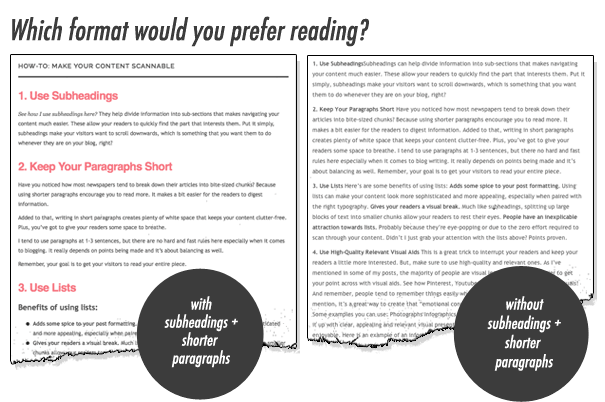
- Add Missing Links and References (3-rd party, outbound links)
While you’re reading your article aloud, you’ll find instances where you’ve mentioned a brand or cited a study without linking to it. Now’s the time to fix it. Make sure all your images, data citations, case studies or any other external content is properly sourced. Don’t take this lightly because using someone else’s content with attribution can get your site into trouble.
- Add Relevant Internal Links
Internal linking helps to improve user experience, visitors’ time spent on a page/website and your client’s search rankings. You can use internal links frequently to expose older/other content to your clients’ readers and to help search spiders crawl the website content faster.
Jump back (at the top of section).
What to DO after you’ve finished writing the content.
These few tweaks will help you to transform your content from great to amazing, and wow the client!
Follow this checklist to ensure that you meet the client’s requirements and overdeliver on their expectations (this is what most freelancers fail to do, losing repeat orders and recurring gigs as a result):
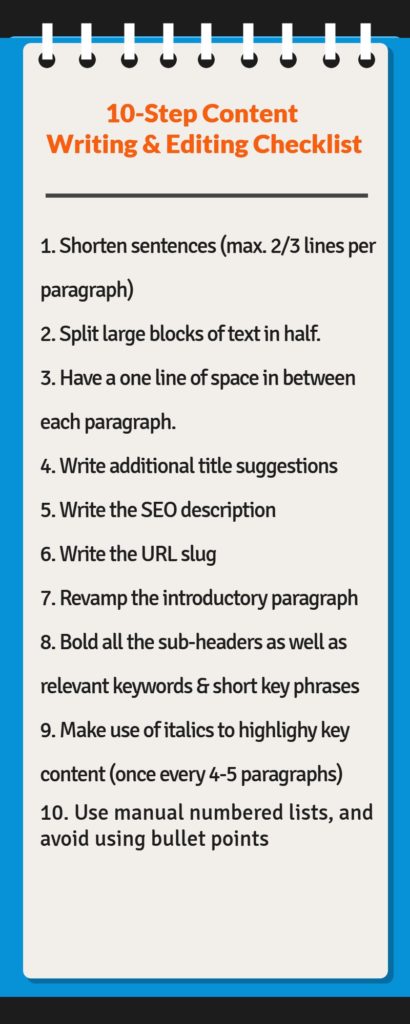
Jump back (at the top of section).
P.S. You may want to read this article, it reveals more information than I’ve shared here. It’s an amazing read to extend your knowledge and writing experience!
